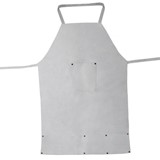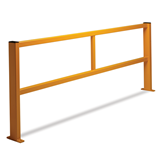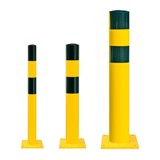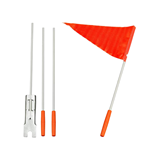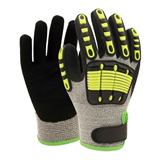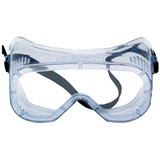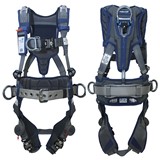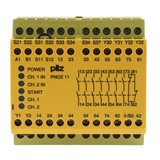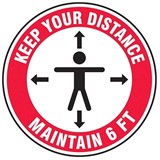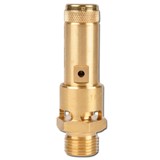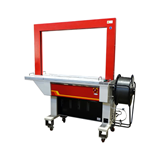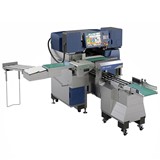Explore safety bollard costs in Australia, including prices, installation fees, and hidden expenses. Budget smart for fixed, retractable, and removable bollards.
Key takeaways
- Pricing: Safety bollards in Australia range from $150 to $300 for basic surface-mounted models, with heavy-duty in-ground or retractable bollards costing between $200 and $2,000+ depending on design and material.
- Installation: Typical installation costs vary from $250 to $700 per bollard, influenced by site conditions, mounting method, and any additional civil works required.
- Additional costs: Budget for hidden expenses such as concrete cutting, permits, electrical connections for automated bollards, and traffic management, which can add $200 to $1,000+ to your project.
- Types: Choosing the right bollard type—standard, shock-absorbing, retractable, removable, fold-down, U-shaped, or flexible—affects overall cost, installation complexity, and suitability for your site.
- Maintenance: Automated and retractable bollards require ongoing servicing, which can cost between $300 and $600 annually.
- Cost savings: Bulk purchasing and coordinating installation with other site works can reduce costs by 10–20% or more.
Introduction
Whether you're protecting storefronts, car parks, pedestrian zones or sensitive infrastructure, safety bollards are a critical investment in public and workplace safety. But many Australian buyers overlook key cost factors beyond just the upfront price.
This buying guide explains what you need to know about safety bollard costs in Australia, including price ranges, installation fees, hidden expenses, and cost-saving tips. By the end, you'll have a clear understanding of total costs so you can budget accurately and invest wisely.
Types of safety bollards explained
If you're unsure which bollard suits your site best, here’s a quick overview of the most common types used in Australia:
1. Standard safety bollards
These are rigid, fixed posts that prevent unauthorised vehicle access and protect infrastructure. Commonly used in car parks, retail fronts, and around pedestrian zones. Available in surface-mounted or in-ground formats.
2. Shock absorption bollards
Designed with internal spring or energy-absorbing systems, these bollards reduce the force transferred on impact. They’re ideal for logistics centres or any area where vehicles operate at speed near pedestrian zones.
3. U-shaped bollards
Installed as a continuous steel hoop, these provide broader coverage than single-post bollards. They are excellent for shielding doorways, roller shutters, and equipment bays.
4. Retractable bollards
These can be lowered into the ground to allow vehicle access when required. They’re ideal for shared access ways, emergency lanes, or loading areas. Manual versions are more affordable; automated versions offer seamless control but are more expensive.
5. Locking removable bollards
These can be manually removed and stored when not in use. They’re commonly installed in private or commercial areas where access needs to be controlled only at certain times.
6. Fold-down bollards
These bollards tilt horizontally to allow vehicle access. They're popular for reserving parking bays or private access areas and are an affordable alternative to retractable models.
7. Flexible bollards
Made from polyurethane or rubber, these are designed to flex and rebound after being hit. Used extensively for road delineation, bike lanes, and traffic calming, they are not intended for high-impact protection but are highly visible and durable.
Safety bollard pricing in Australia
Safety bollard prices in Australia vary widely depending on their construction, installation method, and intended use. Below is a breakdown of average costs for the most commonly used bollards:
- Safety Bollards generally cost between $150 and $300 for surface-mounted versions, while in-ground models range up to $500 to $600 due to more extensive installation work.
- Shock Absorbing Bollards, which reduce impact forces, are priced around $500 to $900 per unit.
- U-Shaped Bollards, which cover wider areas, typically cost between $450 and $800 depending on size.
- Retractable Bollards, manual models start at about $200, while automated systems can exceed $5,000.
- Locking Removable Bollards, range from $350 to $700, suitable for controlled access areas.
- Fold-Down Bollards, ideal for private driveways and reserved parking spaces, range from $200 to $500 depending on the material and lock mechanism.
- Flexible Bollards, used primarily for visual delineation and minor impact flexibility, cost $100 to $250 each.
Installation costs
Installation is a major cost component often overlooked in budgeting.
Typical cost breakdown
- Basic surface mounting: $250 – $400 per bollard (suits concrete surfaces, includes anchoring)
- In-ground installation: $400 – $700 per bollard (includes excavation, concrete footings, materials)
- Retractable bollards: $800 – $1,500+ per unit (manual or automated, electrical components, trenching)
Factors affecting installation costs
- Site conditions (concrete, asphalt, pavers, or dirt)
- Underground utilities (requires scanning, safe digging)
- Traffic control needs in public or commercial zones
- Access difficulties (e.g., remote locations, after-hours work)
According to Safe Work Australia, civil worksite incidents due to poor planning cost Australian businesses over $20 million annually in 2023 alone. Planning proper installation is a smart investment in risk reduction.
Hidden extras to budget for
Beyond purchase and installation, several unexpected costs can impact your total budget:
- Concrete cutting or removal: $100 – $300 per bollard
- Core drilling (for in-ground types): $50 – $150 each
- Electrical connections (automated bollards): $500 – $2,000+
- Permits or approvals: Varies by council ($100 – $500)
- Engineering drawings or site assessments: $250 – $1,000
- Traffic management or barriers: $200 – $800 per day
- Custom finishes or powder coating: $50 – $150 per bollard
Ongoing maintenance
- Manual retractable bollards need periodic lubrication and servicing.
- Automated bollards may require annual inspections and servicing at $300–$600 each.
How to reduce costs without compromising safety
- Standardise models across your site for bulk pricing and simplified maintenance.
- Bundle installation with other civil works (paving, line marking) to share setup costs.
- Use surface-mounted bollards where heavy-duty protection isn’t needed.
- Consult local councils early to avoid permit issues and fines.
- Choose Australian suppliers who understand AS/NZS compliance and reduce shipping delays.
Questions buyers often ask
How many bollards do I need?
It depends on:
- Width of area being protected (standard spacing is 1.2 – 1.5 metres apart)
- Traffic type and load (light-duty vs crash-rated)
- Site layout and regulations
A professional site audit can help determine the optimal number and spacing for full protection.
Can I install bollards myself?
You can install surface-mounted bollards with the right tools, but professional installation is strongly recommended for:
- In-ground and retractable bollards
- Compliance with safety standards
- Accurate placement and load rating
DIY mistakes can lead to insurance claim rejections or safety hazards.
What are crash-rated bollards and do I need them?
Crash-rated bollards (e.g., PAS 68 or ASTM F2656) are tested to stop moving vehicles at specific speeds and weights. They're essential for:
- High-risk sites (e.g. government buildings, data centres)
- Crowded pedestrian zones
- Terrorism mitigation
Prices start from $3,000 per bollard, but can prevent millions in damages or liability.
Are there government rebates or grants for installing bollards?
Occasionally, yes. Some local councils or state governments offer safety infrastructure grants for:
- Traffic calming
- Pedestrian safety
- Security upgrades
Check with your local council or the Australian Government's GrantConnect portal.
Final thoughts
Buying safety bollards in Australia requires more than just comparing product prices. From installation to compliance, the real cost lies in how well your bollards protect people, property, and your liability exposure.
To avoid costly mistakes:
- Assess your risk profile and compliance needs
- Choose the right type of bollard for your site
- Plan for all installation and ongoing costs
Use reputable suppliers and certified installers.


